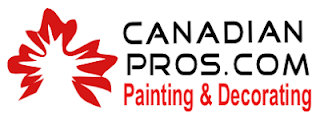WOODEN SURFACES
- Wash with appropiate cleaner to remove any oil, grease or surface contamination. Wash Undereavesto remove any dirt and contamination that may have accumulated. Rinse thoroughly and allow to dry.
- Scrape and sand any pelled, checked or blistered paint to a sound surface
- Sand glossy surface dull. Seal stains *such as water,smoke or grease stainswith the appropiate primer.
- Fill any nailheaddepressions, crack and imperfections with putty. Where neccesary, scrape away old caulk and apply new caulk and primer.
- Coat any scraped, sanded or putied areas with a high quality exterior primer. Unless using self-priming products, you will want to prime any surface that’s being painted for the first time.
Vinyl Surfaces
- Clean the surface thoroughly by scrubbing with warm, soapy water. Rinse thoroughly.
- If you want to paint vinyl siding darker than the original color, choose a product with vinyl performance coatings technology to avoid damage from warping
Concrete & Masonry
- All new surfaces must cure for a specified period of time / usually about 30 days. Check with supplier. If painting cannot wait 30 days, allow the surface to cure 7 days and prime the surface with concrete and masonry primer.
- Remove all form release and curing agents.
- Cracks,voids and other holes should be repainted with an elastomeric masonry patch or sealant.
ALUMINUM SIDING
- Wash with an appropriate cleaner to remove any oil, grease or surface contamination
- All corrosion must be removed with sandpaper, steel wool or other abrading method.
PROJECT CHECKLIST
- Primer
- Spackling & Putty
- Putty Knife
- Masking tape & painters tape
- Sandpaper
- Caulk and caulking gun
- Cleaning Solution
- Drop Cloths
- Roller frame and covers
- Brushes
- Paint tray and tray liner
- Ladders
- Extension pole
- Paint shield
- Gloves
- Rags, paper towels, bucket
- Paint thinner
- Razor blades
- Hand cleaner
